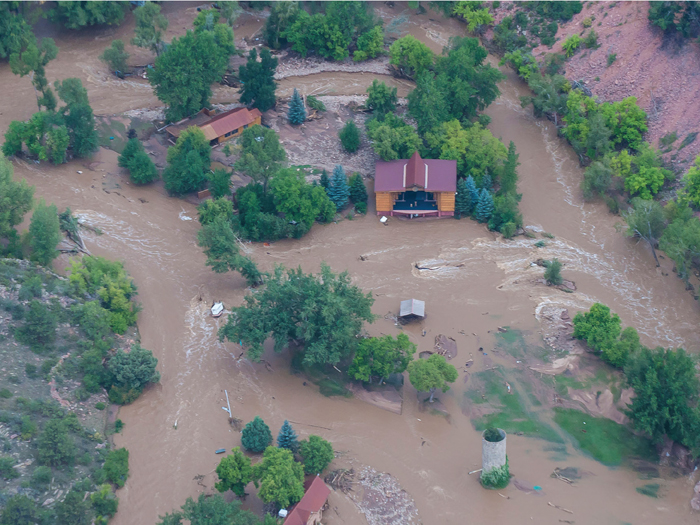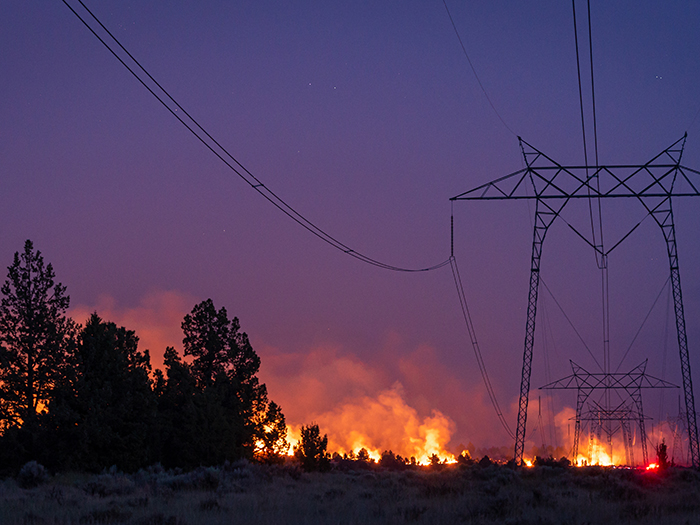Nat Cat Costs Could Jump $7B a Year Thanks to Climate Change

The number of weather disasters costing $1 billion or more is increasing at an alarming rate, according to a National Oceanic and Atmospheric Administration (NOAA) report released in February.
By the Numbers:
- 241: Weather and climate disasters costing $1 billion in the past 39 years.
- $1.6 trillion: The cumulative cost of those 241 disasters.
- 12: The number of billion-dollar disasters in the past five years. From 1980 to 2013, the annual average was just six.
- 8: The number of consecutive years with eight or more billion-dollar disasters.
The Past Two Years Were Particularly Devastating
In 2018, there were 14 billion-dollar disasters, led by Hurricanes Florence and Michael, which caused $24 billion and $25 billion in damages respectively. Wildfires also caused massive devastation, making 2018 the second consecutive year in which a new record was set for national losses due to western wildfires.
It was even worse in 2017 when Hurricanes Harvey, Irma and Maria led the way toward 16 billion-dollar disasters causing $306 billion in total losses.
Plenty of Variables Affect Disaster Cost
The Washington Post reminds us that costs aren’t just determined by the severity of a weather: “For instance, a hurricane that hits a heavily populated area, such as Hurricane Sandy in 2012 or Hurricane Harvey in 2017, is likely to have a far higher economic impact than one that hits a less crowded part of the country.”
The Post continued, “The nation’s growing population, inconsistent building codes and the fact that many cities and infrastructure sit near coasts or along rivers also play a role.”
The Climate Change Factor
The NOAA also released a separate report with NASA, finding that 2018 was the fourth warmest year on record. In a press release, Gavin Schmidt, director of NASA’s Goddard Institute for Space Studies, said: “The impacts of long-term global warming are already being felt — in coastal flooding, heat waves, intense precipitation and ecosystem change.”
The Post interviewed Kerry Emanuel, from the Massachusetts Institute of Technology, who suggests Hurricane Harvey’s massive rainfall was due to climate change. While the relationship between climate change and increasing weather disasters hasn’t been proven with the scientific community’s 95 percent certainty, he said, it’s still a no-brainer.
“If you’re assessing a risk, a risk you have every reason to think exists, nobody would ever require that certainty. Generals in the battlefield would never wait for 95 percent certainty,” Emanuel said.
The Post also cited research linking climate change to disaster cost more directly: “A 2014 analysis by the Rhodium Group, for instance, projected that by 2030, the average damage from hurricanes and nor’easters, to the East and Gulf coasts in particular, should be $3 billion to $7.3 billion higher each year. That’s if climate change continues unabated.”
Further reading: We’ve written extensively about disastrous weather events. Here are a few articles we recommend:
1. California’s Deadly Wildfires, By the Numbers
3. When Hurricane Waters Recede, Pollution Remains
4. Post-Hurricane Rebuild Risk Management










